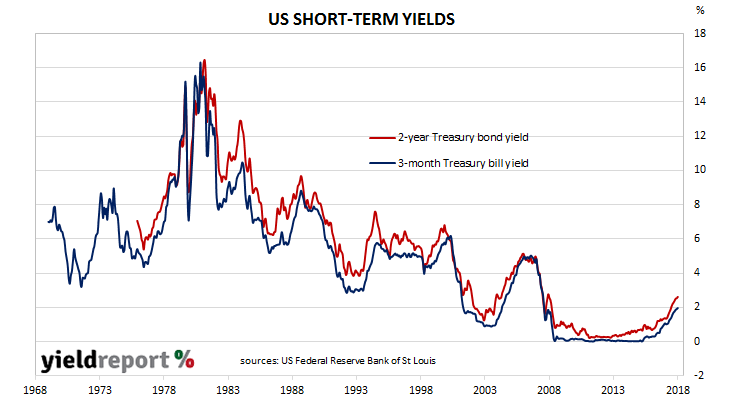The US yield curve has been attracting quite a bit of attention recently, especially now the gap between 2 year Treasury bonds and 10 year Treasury bonds is so small. The reason for this attention lies in the reliability of a negative spread as a predictor of US recessions since the 1950s.
FOMC minutes through 2018 indicate the slope of the yield curve has been regularly discussed in recent months. Some Federal Reserve members have even gone so far as to state publicly they would oppose any rate rise which would invert the yield curve. Bank of Atlanta President Raphael Bostic said he “will not vote for anything that will knowingly invert the curve…” despite his belief an inverted curve does not necessarily always precede a recession.
The slope or gradient of a curve can be calculated mathematically by measuring between two points, usually one at the very beginning or a curve and one at the very end. In the case of the US government yield curve, this suggests taking the yield on a 3-month Treasury bill and comparing it to a 30-year Treasury bond yield.

